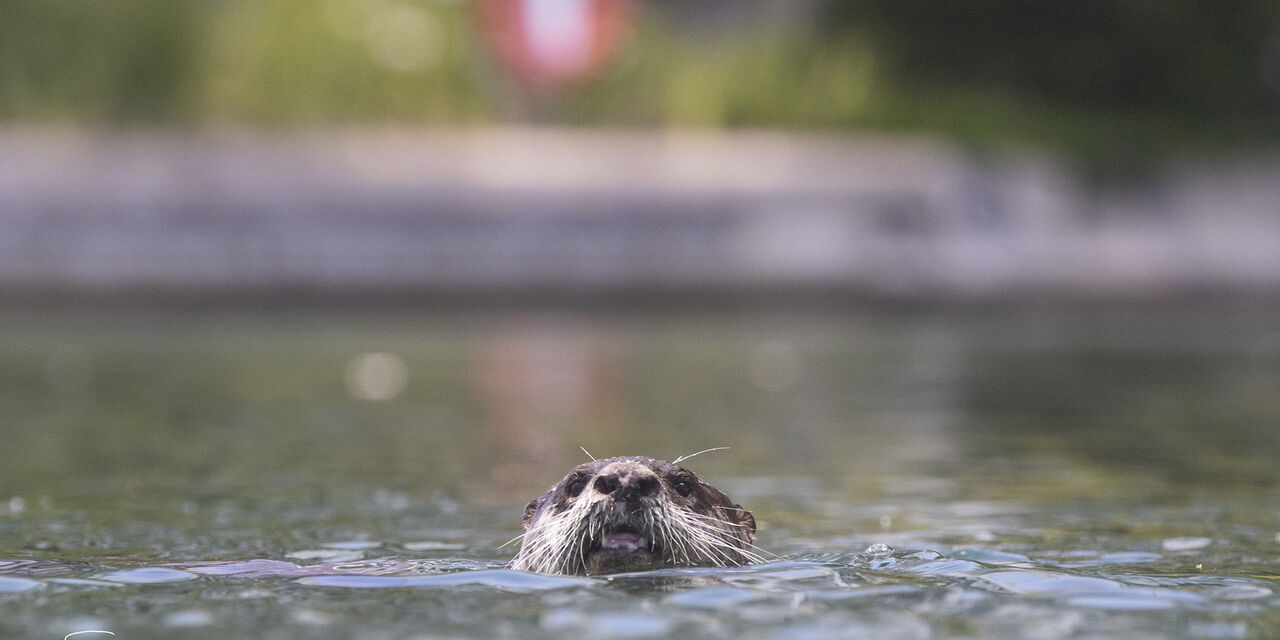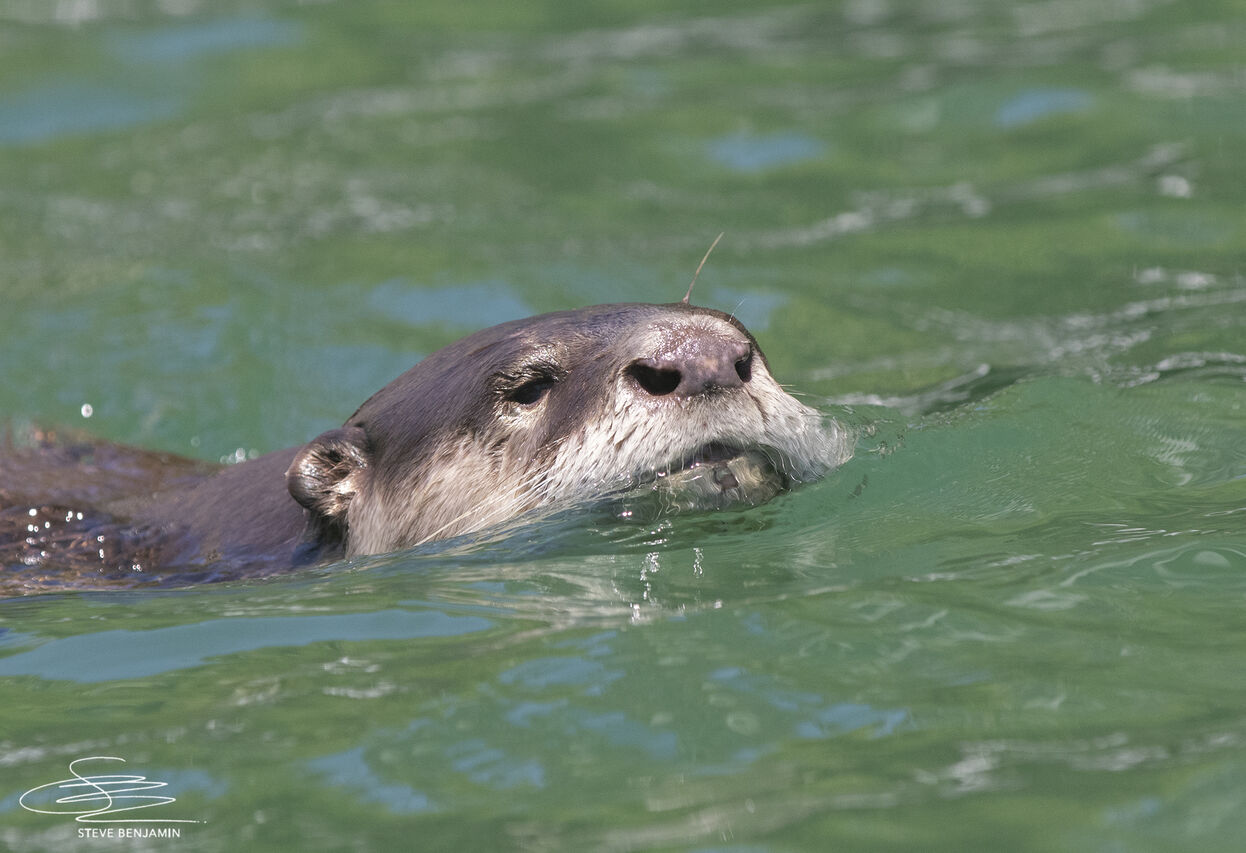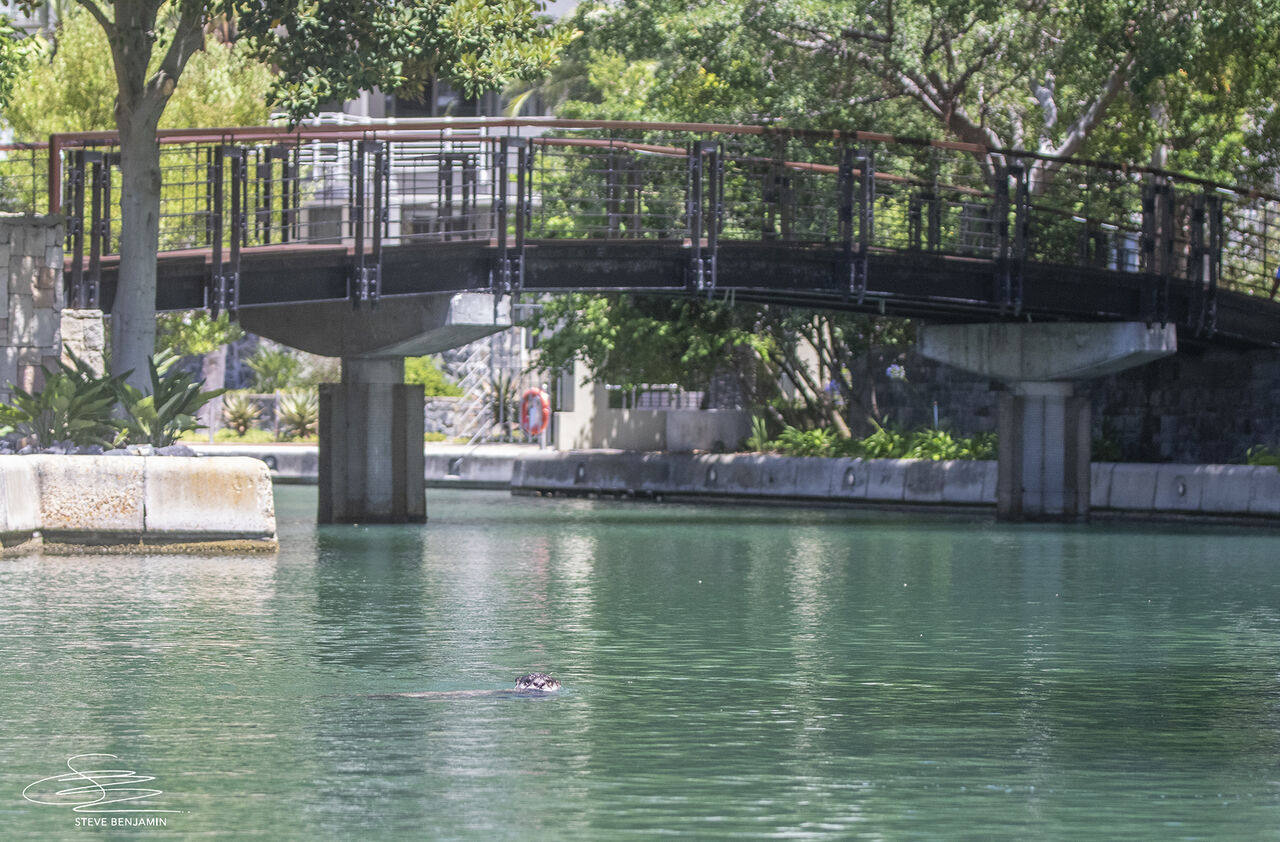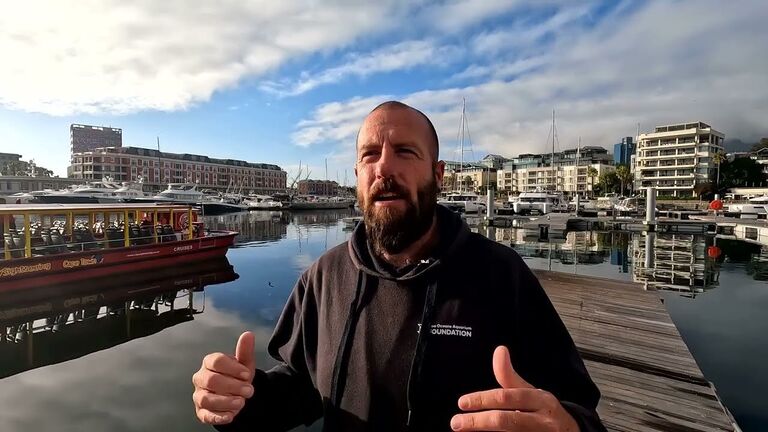
Urban Otter Project
What are Cape clawless otters?
Cape clawless otters (Aonyx capensis) are a unique and mischievous presence in the V&A Waterfront. They live both in freshwater and along the coast. They are named for their clawless front feet, which are adapted for digging. Cape clawless otters are further characterised by soft, brown fur, white chin and chest, and small ears. Their long, white whiskers (called vibrissae) are sensitive to touch and underwater vibrations. Cape clawless otters use their vibrissae to detect the movements of potential prey. They feed on crabs, fish, frogs, insects, worms, shysharks, and even waterfowl.
Urban Otter Project
The V&A Waterfront is a space where recreation, industry, and marine wildlife intersect - and where tension can arise from the interaction between the urban and natural worlds.
Otters have been in the Waterfront since 2018 when one took residence under a jetty in the canals. During the coronavirus pandemic in 2020, when much activity on the Waterfront shut down, the otters established several territories in the absence of human activity. The Cape clawless otter population in the Waterfront now comprises a small family.
The Two Oceans Aquarium Foundation’s Marine Wildlife Management Programme, in partnership with the V&A Waterfront, initiated the Urban Otter Project in 2022 to mitigate potential interactions between otters and humans. This programme doubles as a research project, as our otter monitors collect data for the scientific study of Cape clawless otters, contributing to the global database daily.

Urban otters
The urbanisation of the Cape clawless otter in the Waterfront includes modification of their natural behaviours to suit their environment.
Otters exhibit crepuscular activity, meaning they are most active at dawn and dusk. Typically, these times are quiet, with few humans around, and encounters are less likely. However, after the freedom of the coronavirus pandemic period, these “urban otters” are much less afraid of people and have become part of the urban ecosystem, much like pigeons. They are now bolder and come out in the middle of the day.
Although otters spend much time in saltwater, they need freshwater to survive. Many hotels and residences along the Waterfront have freshwater pools and fountains, and our otter monitors have observed the otters using these spaces. These freshwater sources seem to be among the areas where the otters are more territorial.
The urbanisation of otters, coupled with their territorial behaviour, can lead to encounters with humans. Although our otter programme has not yet had any serious altercations to deal with, those living and working along the Waterfront must have a healthy respect and knowledge of these animals and the correct “otter etiquette”.
Why do otters live in the Waterfront?
The Cape clawless otters in the Waterfront are a unique part of its marine ecosystem. In the wild, otters are keystone species, meaning other species rely on them and their lifestyle to survive. In the V&A Waterfront, the urban otters also play a role in the ecosystems of the canals and waterways.
The Waterfront provides safety and food for the family of Cape clawless otters. The Urban Otter Project has noticed that the otters rely on the vegetation planted by the residents and hotels for shelter. Bushes and shrubs, such as honeysuckle bushes, are ideal places for otters to sit under, have shade, and roll in the sand. The jetties are also fantastic areas for them to dig under, creating safe holes or holts. Our team has put up several camera traps at these holts, which allows us to observe their behaviour patterns.
The presence of a situated, comfortable family of Cape clawless otters showcases the abundance of species and biodiversity within the Waterfront. Our otter monitors have observed the otters feeding on crabs, shysharks, and klipvis within the waterways and canals. As green spaces within urban areas are created, wildlife is inevitably attracted to said spaces. In the case of the Cape clawless otter family, it’s a generation of urbanised otters that have returned – it shows that the Waterfront precinct is biodiverse.

Otter Monitors
The Urban Otter Project is focused on monitoring the otters rather than people. The otter monitors are “otter chaperones”: they spend most of the day observing and monitoring the otters’ behaviour, particularly during peak activity times. This allows our team to anticipate the movements of the otter family, mitigating encounters between them and the residents in the Waterfront.
Not only do our otter monitors conduct research and gather observation data, but they also educate members of the public about Cape clawless otters. It is common for dog walkers, kayakers, residents, and tourists to encounter these animals. By chaperoning the otters, our monitors can mediate these meetings with minimal stress to animals and humans.
The Marine Wildlife Management Programme team has other strategies for moderating human-wildlife interaction in the V&A Waterfront. The Urban Otter Project provides floating platforms in the canals, complete with foliage and freshwater pools, to encourage the otters to stay away from swimming pools and fountains. They have also provided signage to educate guests and have briefed residents and retail on correct “otter etiquette”.
What to do if you encounter an otter
- Walk backwards, and don’t stand still. Move away from the otter.
- Use a jersey or raincoat to usher the otter away from your feet – if you stand still, they may investigate your foot.
- If you're swimming, change direction when you near their territory.
- Wear booties when swimming or kayaking.
- Keep moving away from the otter, on foot or on water.
As long as you abide by these “otter etiquette” rules, you shouldn’t have any negative interactions.
Report your otter sighting:
sightings@aquariumfoundation.org.za or WhatsApp 076 092 8573
Please include images and any details.
